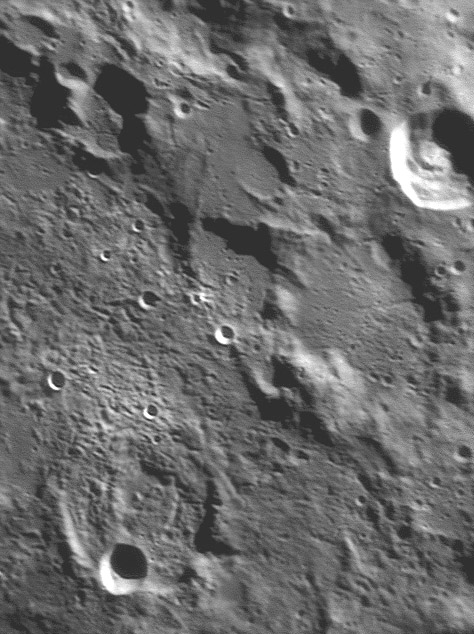
image by Wes Higgins
Astronaut John Young called the Apollo 16 landing site: our mysterious and unknown Descartes. Wes Higgins’ great image reminds me of why it is still mysterious and likely to remain so for a long time. Before Apollo 15, the peculiar knobby terrain that appears to come out of Descartes and extend 100 km to the north was widely considered to be some sort of volcanic deposit. The reason was that no other place on the Moon had this texture, and it does look like the interior of Descartes has been filled with a hilly-looking viscous lava flow. But as soon as John Young looked out the window of Orion he saw bright colored rocks – the color of highland anorthosites, not dark lavas. The samples brought back by the Apollo 16 crew were indeed highlands rocks and all the lunar geologists quickly said: Oops, we were wrong, the strange Descartes stuff is impact ejecta, probably from the formation of the Nectaris basin. But I am not convinced that we know what the Descartes Formation (as the hilly material is called) really is. If it came from Nectaris why isn’t there similar material anywhere around Nectaris? Some of the fine details of the Descartes Formation look volcanic. Do you see the line of six little rounded hills just north of where Descartes rim should be? The Apollo 16 crew got nowhere near these mysterious hills, nor did they get on the Descartes Formation itself. Finally, Lunar Prospector found a significant magnetic anomaly under the hilly material. But if there was volcanism at Descartes why don’t we see anything like it elsewhere. And why does the Descartes Formation not look unusual spectrally? I wish it all wasn’t quite so mysterious.
Technical Details:
April 15, 2005. 18″ Starmaster Reflector, DMK-21F04 camera, MAP processing, 30fps, stack of 500 frames.
Related Links:
Rükl charts 45 & 46
Wes’ lunar photos
Orbital Views of Apollo 16 area
Yesterday's LPOD: Hidden Maria
Tomorrow's LPOD: Mare Layering
COMMENTS?
Register, Log in, and join in the comments.



